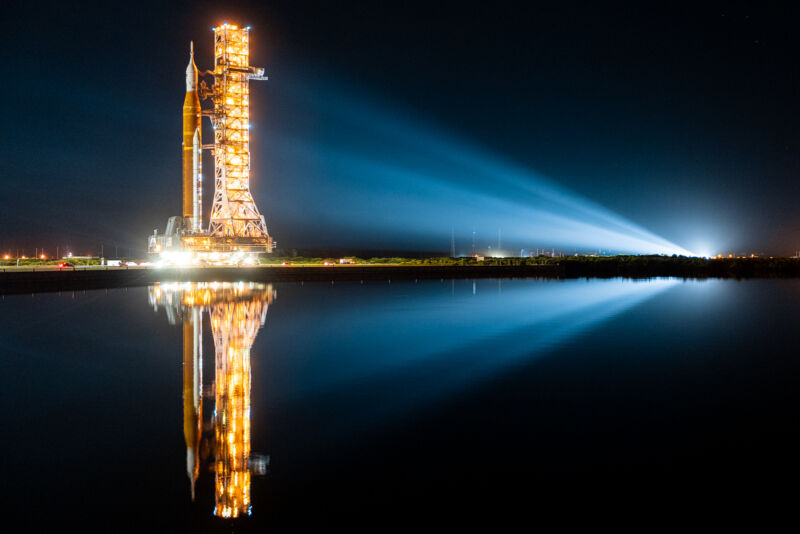KENNEDY SPACE CENTER, Fla.—It is time.
Shortly after midnight local time, NASA began loading liquid oxygen and liquid hydrogen on board its Space Launch System rocket ahead of a Monday morning launch attempt.
It is difficult to overstate the significance of this mission for NASA. This will be the space agency's first launch of one of its own rockets since 2011, the final mission of the space shuttle. Even more significantly, this Artemis I mission is the first stepping stone on a path that could lead NASA, along with a bevy of international partners, back to the Moon and on to Mars.
A two-hour launch window opens precisely at 8:33:00 am ET (12:33 UTC) on Monday morning, at Launch Complex 39B at Kennedy Space Center.
You should set your expectations accordingly. Yes, there are reasons to be optimistic that the rocket will take off on schedule. Overall, weather conditions look favorable for Monday morning. And NASA has done all it can reasonably do to prepare for this launch attempt, including fueling the vehicle multiple times, and bringing its countdown to within seconds of an actual launch attempt.
"We are prepared for just about anything," said Jeff Spaudling, NASA's Artemis I senior test director, during a pre-launch news conference on Sunday. "We look great for tomorrow."
Nevertheless the launch attempt could very well be scrubbed. Among the main concerns are testing fixes to hydrogen leaks with the rocket's ground support equipment. And then there is just the usual shakedown process of testing out large, complex, new space hardware.
If NASA cannot get the mission off, what happens next will depend upon the circumstances of the scrub. If the countdown reaches inside of T-6.8 seconds, and the SLS four main engines ignite, there will be no quick recycle attempt. A scrub after engine ignition would require a rollback to the Vehicle Assembly Building for an engine swap—it is quicker to swap out for other RS-25 engines than to go through the painstaking inspection process. This would push the next launch attempt into at least October.
If the rocket scrubs prior to engine ignition, the next possible date for an attempt is September 2, with a launch time in the middle of the day, followed by daily opportunities through September 5. After this point the vehicle would need to be taken off the pad for refurbishment, necessitating a multi-week delay.
This is a flight test, but confidence is high in success. NASA officials said this weekend that the estimate for "loss of vehicle" during the Artemis I mission is 1 in 125. This means the agency is more than 99 percent confident that the SLS rocket will successfully launch the Orion spacecraft into orbit, after which time it will fly off to the Moon and remain there for several weeks, before splashing down in the Pacific Ocean after a 42-day mission in October.
No crew will be on board the vehicle, but if this mission goes well the Artemis II flight in about two years will carry four astronauts out to the Moon and back, followed by a landing during the Artemis III program later this decade. This is NASA's first credible deep space exploration program involving astronauts since Apollo, half a century ago. To boldly go, it must take those first tentative steps. Such are the stakes on Monday.
NASA will broadcast the launch attempt live, starting at 6:30 am ET (10:30 UTC) on Monday. There are other NASA broadcast options as well, including a clean feed featuring views of the rocket and audio from a commentator in the Launch Control Center on NASA's media channel.



3175x175(CURRENT).thumb.jpg.b05acc060982b36f5891ba728e6d953c.jpg)

Recommended Comments
There are no comments to display.
Join the conversation
You can post now and register later. If you have an account, sign in now to post with your account.
Note: Your post will require moderator approval before it will be visible.